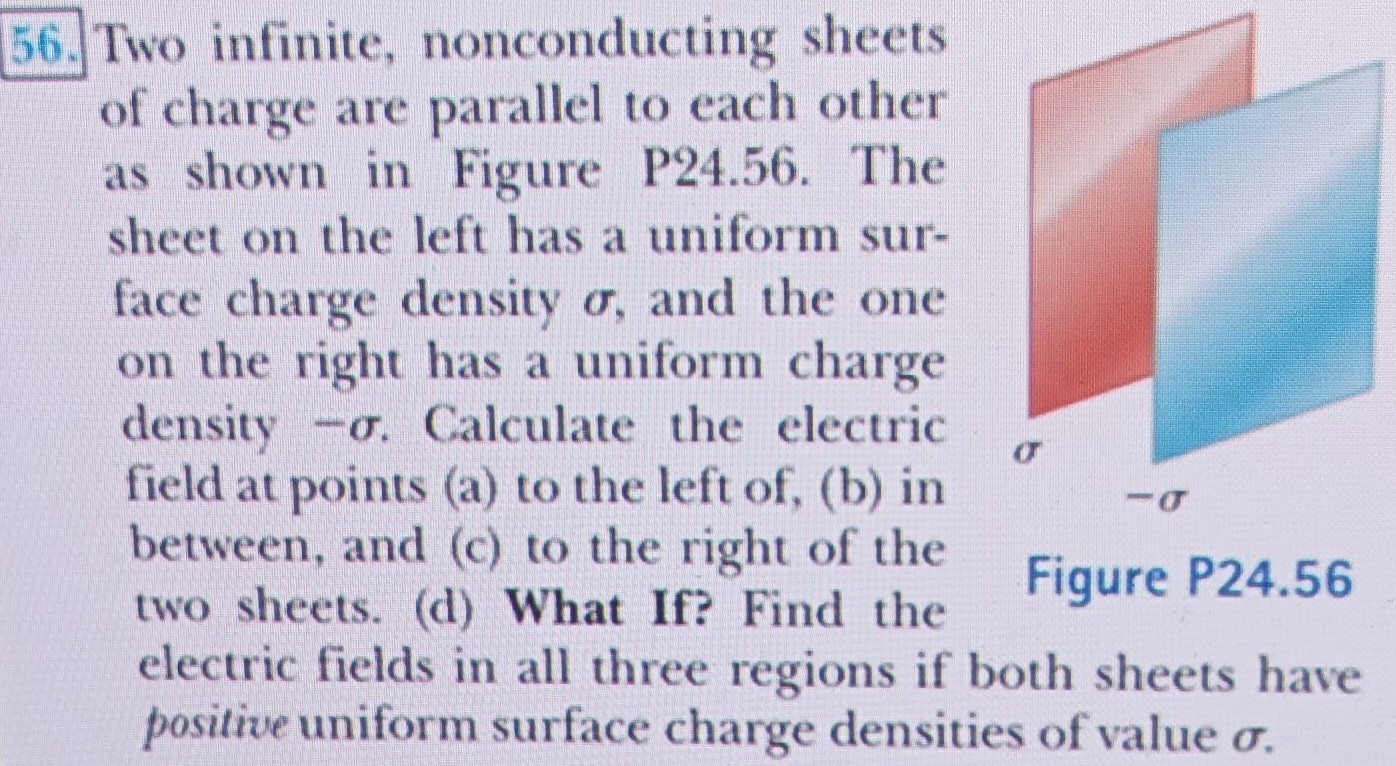Two infinite, nonconducting sheets of charge are parallel to each other as shown in Figure P24.56. The sheet on the left has a uniform surface charge density σ, and the one on the right has a uniform charge density −σ. Calculate the electric field at points (a) to the left of, (b) in between, and (c) to the right of the two sheets. (d) What If? Find the Figure P24.56 electric fields in all three regions if both sheets have positive uniform surface charge densities of value σ.
